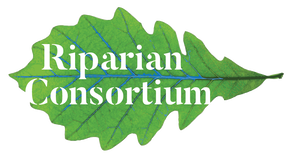resources
Please share the James River Buffer Program Flyer with your friends, family, and neighbors! To learn more about riparian forest buffers see the resources below:
Documents
General InformatioN
- Buffer FAQ, Upper and Middle James Riparian Consortium (PDF)
- Buffer Over Time, Upper and Middle James Riparian Consortium (PDF)
- Chesapeake Riparian Forest Buffer Network, Chesapeake Bay Program, Alliance for the Chesapeake Bay, and the United States Forest Service
- Forests and Water: Get the Most Out of Your Land, Virginia Department of Forestry (PDF)
- Why Plant Forests Buffers, Virginia Department of Forestry (PDF)
- Riparian Forest Buffers: Forests on the Water's Edge, Virginia Department of Forestry (PDF)
Buffer Design and Maintenance
- Conservation Buffers Design Guidelines for Buffers, Corridors, and Greenways, United States Department of Agriculture (PDF)
- The Green Book for the Buffer, Maryland Department of Natural Resources (PDF)
- Landowner Guide to Buffer Success, Chesapeake Bay Foundation (PDF)
- Landscaping at the Water's Edge, University of New Hampshire Cooperative Extension (PDF)
- Riparian Buffer Maintenance and Tips - James River Buffer Consortium (PDF)
- Understanding the Science Behind Riparian Forest Buffers: Planning, Establishment, and Maintenance, Virginia Cooperative Extension (PDF)
Invasive Plant Species
- Blue Ridge PRISM
- A Management Guide for Invasive Plants in Southern Forests, United States Forest Service (PDF)
- Non-Native Invasive Plant Species Control Treatments, Virginia Department of Forestry (PDF)
Native Riparian Plants
- Native Plants for Conservation, Restoration & Landscaping, Virginia Department of Conservation and Recreation and the Virginia Native Plant Society (PDF)
- Which Tree Should I Plant? A Guide for Selecting Riparian Trees and Shrubs in Virginia, Upper and Middle James Riparian Consortium (PDF)
|
For additional riparian forest buffer resources visit the Upper & Middle James Riparian Consortium Resources page and Video Library.
|

